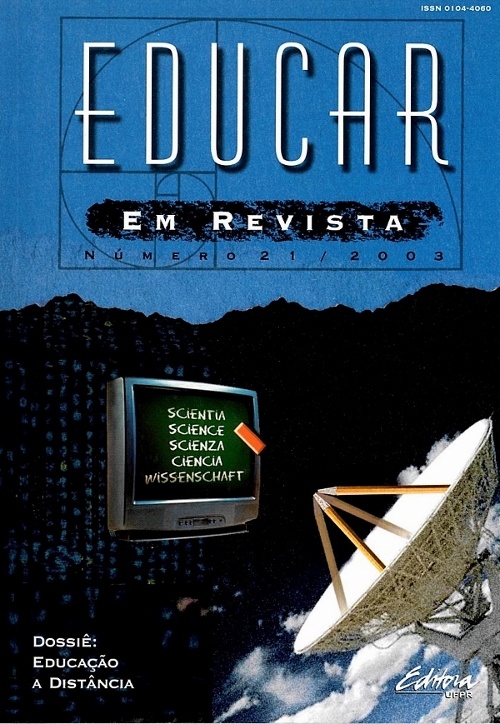O ensino semi-presencial como resposta às crescentes necessidades de educação permanente
Keywords:
ensino semi-presencial, educação permanente, aprendizagem internet, novas tecnologias da comunicação, educação novas tecnologias, semi-presence education, permanent education, new technologies, learning in the Internet, new technologies education.Abstract
Apresenta o ensino semi-presencial mediado pelas novas tecnologias de comunicação, especialmente a internet, apontando-o como estratégia de inovação para o processo de ensino-aprendizagem. Ressalta algumas diferenças entre ensino presencial e semi-presencial, e as peculiaridades de ambas as modalidades. Expõe as características do ensino semi-presencial, observando mudanças no papel do professor e na postura do aluno. Enfoca a importância do material didático e das ferramentas da internet como facilitadores da construção do conhecimento no ensino semi-presencial. Alerta para as transformações que vêm ocorrendo no campo da educação, propondo a inclusão urgente das tecnologias na aprendizagem, e sugerindo o ensino semi-presencial como uma alternativa na busca constante de aperfeiçoamento.
The semi-presence education as answer to growing needs to permanent education
Abstract
This article discusses a form of semi-presence education mediated by new technology as an innovative strategy to the learning process. It emphasizes some differences between presencial and semi-presencial learning and describes some peculiarities on both. The text examines semi-presence education, from point of view of change that occur on the role of teachers and students. It also focus on the role of media as a facilatator on building the learning in semi-presence education. Alerts for the transformations that are happening in education, and proposes the use of new technologies to help the learning processes. It suggests the semi-presence education as an alternative for the development of new methods of education.
How to Cite
Issue
Section
License
Copyrights for articles published in Educar em Revista belong to the author, with the first publication copyrights reserved to the journal. The journal offers public access (Open Access), and its articles are of free use, with specific assignments, in educational and non-commercial applications.



